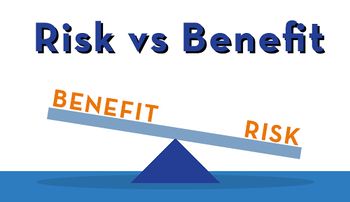Information for patients, family members, carers and the public

The primary aim of radiological protection is to provide an appropriate standard of protection for people and the environment without unduly limiting the beneficial practices giving rise to radiation exposure. ICRP Publication 103[1] has formulated a set of fundamental principles of radiological protection that apply to radiation sources and to the individuals being exposed. These principles are applicable to radiological protection in medicine. ICRP has provided recommendations for protection in medicine through ICRP Publication 105 Radiological Protection in Medicine[2], ICRP Supporting Guidance 2 Radiation and your patient - A Guide for Medical Practitioners[3] and ICRP Publication 73 Radiological Protection and Safety in Medicine[4].
Contents
For Patients
Medical radiation sources are used deliberately in the healthcare of patients and are designed for use in a controlled manner. There obviously are some adverse health risks associated with the use of radiation in medicine [2], with higher amounts of radiation being associated with higher risks. The undisputed health benefits of diagnostic radiology[5][6][7] using x-ray or nuclear medicine[8] may be accompanied by a generally very small risk (probability) of deleterious effects, while in radiation therapy[9][10][11][12] such risk can be much higher as large amounts of radiation are required.
In medicine, the aim of managing radiation exposure is to minimise the presumed low risk without sacrificing, or unduly limiting, the obvious benefits in the prevention, diagnosis, and effective cure of diseases. Using a larger amount of radiation cannot be justified if a smaller amount can deliver the expected benefits, but too low an amount of radiation in diagnostic radiology will result in an image that does not have enough information to make a diagnosis, and in radiation therapy, not delivering enough radiation will result in increased mortality because the cancer being treated will not be cured.
Experience has provided ample evidence that reasonable selection of the conditions under which ionising radiation is being used in medicine can lead to health benefits substantially outweighing the estimated possible deleterious effects.
Medical exposures during pregnancy require specific consideration due to the radiation sensitivity of the developing embryo/fetus. Before any exposure using ionising radiation, it is important to determine whether a female patient is, or could be, pregnant. Prenatal doses from most correctly performed diagnostic procedures present no measurably increased risk of prenatal death, developmental damage including malformation, or impairment of mental development over the background incidence of these entities. The benefits to the mother of obtaining important diagnostic information for her treatment is very likely to outweigh this risk. However, higher doses, such as those involved in therapeutic procedures, have the potential to result in developmental harm or cancer induction in unborn babies. The pregnant patient has a right to know the magnitude and type of potential radiation effects that may result from in-utero exposure. Detailed discussions with her physician are highly encouraged. Pregnant patients should note that the incidences of fetal anomalies, with or without routine medical imaging, are similar to baseline background event rates. These include a 15% rate of spontaneous abortion, a 4–10% incidence of genetic abnormalities, a 4% risk of intrauterine growth retardation, and a 2–4% incidence of major malformation.[13][14]
Children are considered, in general, more sensitive to radiation exposure than adults in view of growing tissues and longer life expectancy. Some tissues in children are more sensitive to radiation than those in Adults. For this reason, further caution should be exercised when ionising radiation is used to image children.
For family members, caregivers and the public
When a patient is exposed to external sources of radiation during diagnostic radiology or radiation therapy, there is no residual radiation remained in the patient after the procedure, and the patient poses no radiation risk to family members or the others who provide care to the patient, and the general public the patient may come into contact. However, when nuclear medicine is used for diagnostic radiology or radiation therapy, protection of family members, other carers and the public, should be considered as the patient may remain “radioactive” for some time following the administration; the radiopharmaceuticals administered to the patient would need some time to physically decay or be biologically eliminated.[15][2]
For diagnostic nuclear medicine procedures (e.g. bone or myocardial perfusion scans), the amounts of radiopharmaceuticals administered to the patients are typically small and consequently the amounts of radiopharmaceuticals retained in these patients and the levels of radiation emitted are low as well. These patients are generally discharged immediately after the procedure and instructed that they can carry on their normal daily activities. These patients do not pose a radiation risk to those around them.
For specific therapeutic nuclear medicine (e.g. unsealed source therapy) or radiation oncology (e.g. brachytherapy) procedures, such as 131I therapy for thyroid cancer or some forms of hyperthyroidism, the patient has significant amounts of residual radioactivity in their body that may pose some risks to the others, if they are released shortly after the treatment procedure. To reduce such risks, the patient is usually admitted for a period of time, or discharged if radiation safety concerns are adequately met (e.g. lives alone with restrictions on human contact for a period of time) until the radiopharmaceutical retained in the body is sufficiently reduced through a combination of radioactive decay and biological elimination. In addition, these patients are generally instructed to avoid prolonged close contact with children or pregnant women for a specific period of time following release.
In nuclear medicine, varying amounts of radiopharmaceuticals are retained in the body for varying periods of time. Also, some radiopharmaceuticals can be transferred to breast milk and passed from mother to child during breast feeding. As a result, both the mother, and her breast milk, can be a source of radiation to a baby. So, non-urgent nuclear medicine tests should be postponed until the breast-feeding period is completed. Depending on the specific radiopharmaceutical administered, guidelines range from no interruption in breast feeding for the majority of radiopharmaceuticals, to interruption for a prescribed period of time, to total cessation of breast feeding. A nuclear medicine specialist should be consulted prior to the administration of radiopharmaceuticals to breast feeding patients. In addition, if a radiopharmaceutical is administered to a pregnant woman, it may pass through the placental barrier and present a possible risk to the unborn child.
131I deserves special attention. 131I is used for both diagnostic and therapeutic thyroid procedures. Even small amounts of 131I (physical half-life of 8 days), as are used in thyroid uptake studies, are excreted into breast milk and are sufficient to have an adverse effect on the baby’s thyroid function and induce hypothyroidism. When 131I is used, breastfeeding should be terminated.

More In-Depth Information
If you are looking for something more extensive look no further below are a collection of related links and articles that can provide more information on this topic!
| Pediatric Radiology and Imaging | https://www.imagegently.org/ |
| Radiology and Imaging | https://www.imagewisely.org/ |
| International Atomic Energy Agency | https://www.iaea.org/resources/rpop |
References
- ↑ ICRP Publication 103 The 2007 Recommendations of the International Commission on Radiological Protection. Ann. ICRP 37(2-4), 2007.
- ↑ 2.0 2.1 2.2 ICRP Publication 105 Radiological Protection in Medicine. Ann. ICRP 37(6), 2007.
- ↑ ICRP Supporting Guidance 2 Radiation and Your Patient A Guide for Medical Practitioners. Ann. ICRP 31(4), 2001.
- ↑ ICRP Publication 73 Radiological Protection and Safety in Medicine. Ann. ICRP 26(2), 1996.
- ↑ ICRP Publication 87 Managing Patient Dose in Computed Tomography. Ann. ICRP 30(4), 2000.
- ↑ ICRP Publication 102 Managing Patient Dose in Multi-Detector Computed Tomography (MDCT). Ann. ICRP 37(1), 2007.
- ↑ ICRP Publication 121 Radiological Protection in Paediatric Diagnostic and Interventional Radiology. Ann. ICRP 42(2), 2013.
- ↑ ICRP Publication 128 Radiation Dose to Patients from Radiopharmaceuticals A Compendium of Current Information Related to Frequently Used Substances. Ann. ICRP 44(2S), 2015.
- ↑ ICRP Publication 127 Radiological Protection in Ion Beam Radiotherapy. Ann. ICRP 43(4), 2013.
- ↑ ICRP Publication 98 Radiation Safety Aspects of Brachytherapy for Prostate Cancer using Permanently Implanted Sources. Ann. ICRP 35(3), 2005.
- ↑ ICRP Publication 97 Prevention of High-dose-rate Brachytherapy Accidents. Ann. ICRP 35(2), 2005.
- ↑ ICRP Publication 86 Prevention of Accidents to Patients Undergoing Radiation Therapy. Ann. ICRP 30(3), 2000.
- ↑ ICRP Publication 84 Pregnancy and Medical Radiation. Ann. ICRP 30(1), 2000.
- ↑ Exposure of the Pregnant Patient to Diagnostic Radiations—A Guide to Medical Management. 2nd Edition, by Louis K. Wagner, Richard G. Lester, and Luis R. Saldana[1]
- ↑ ICRP Publication 94 Release of patients after therapy with unsealed radionuclides. Ann. ICRP 34(2), 2004.


